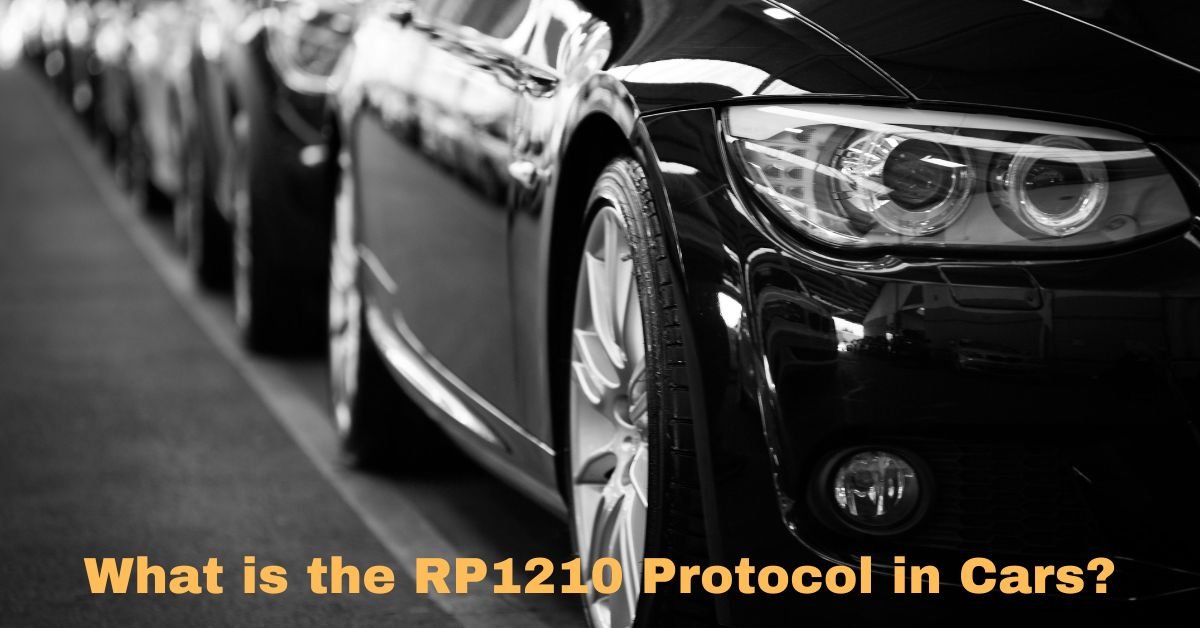When it comes to modern automotive diagnostics and fleet management, one protocol stands out for its significant role in standardizing communication between vehicles and diagnostic tools: the RP1210 protocol. But what exactly is RP1210, and why is it so important in the automotive industry?
What is the RP1210 Protocol in Cars? A Comprehensive Guide
1. What is RP1210?
The RP1210 protocol is a standard for communication between a vehicle’s on-board diagnostic system (OBD) and a computer or diagnostic tool. Developed by the Society of Automotive Engineers (SAE) and primarily used in heavy-duty trucks, commercial vehicles, and fleet management, the RP1210 standard ensures that diagnostic software can interact seamlessly with vehicles, allowing for efficient maintenance and repair.
The full name of the protocol is RP1210 – Vehicle Communication Interface (VCI) Standard. It is essentially a bridge between a vehicle’s electronic control unit (ECU) and diagnostic equipment, enabling technicians to read and clear fault codes, monitor vehicle performance, and even perform specific repairs.
2. The Origins of RP1210
RP1210 originated in the early 2000s to provide a standardized way for diagnostics to interact with heavy-duty commercial vehicles. As vehicles became more advanced, with electronic systems controlling everything from the engine to the braking system, the need for a universal communication protocol became apparent.
Before RP1210, different manufacturers used various proprietary communication methods, making it difficult for fleet managers and technicians to use a single diagnostic tool across different vehicle models and brands. This lack of interoperability led to inefficiencies and increased costs in the maintenance of commercial fleets.
RP1210 was designed to solve these issues by creating a universal standard that would allow diagnostics to communicate across different vehicles, irrespective of the brand or model. As a result, the RP1210 protocol has become a critical tool in modern automotive maintenance and repair.
3. How Does RP1210 Work?
At its core, RP1210 is a communication protocol that defines how data is transmitted between a vehicle’s diagnostic port (usually through the J1939 or J1708 standards in heavy-duty vehicles) and a diagnostic tool or fleet management system.
The diagnostic tool, typically a computer or a specialized scan tool, uses the RP1210 interface to communicate with the vehicle’s on-board computer systems. Through this interface, technicians can access important vehicle data such as:
- Fault codes: Error codes indicating problems with the vehicle’s systems.
- Live data streams: Information about engine performance, fuel usage, speed, tire pressure, and more.
- Control functions: The ability to modify certain vehicle parameters or reset systems.
By providing a standard interface for diagnostic equipment, RP1210 enables diagnostic tools to work across a wide range of vehicles. This saves fleet managers and technicians time and money, as they no longer need to rely on manufacturer-specific tools or software.
Must Read: What If Another Vehicle Caused Me To Hit Another Car?

4. Benefits of the RP1210 Protocol
- Standardization Across Vehicle Brands
One of the primary advantages of RP1210 is that it ensures standardization. Fleet operators no longer need to worry about different tools for different vehicle brands. With RP1210-compliant diagnostic tools, technicians can easily access data from various vehicle models without compatibility issues. - Improved Diagnostic Efficiency
With RP1210, diagnostic tools can quickly and accurately pull information from a vehicle’s ECU. This leads to faster troubleshooting and repairs, which ultimately reduces downtime and maintenance costs for fleet operators. - Increased Flexibility and Interoperability
RP1210 allows for flexibility, as it is designed to work with a variety of vehicle communication systems, including the J1939 and J1708 standards commonly found in trucks and commercial vehicles. This flexibility is crucial for large fleets that operate multiple vehicle types from different manufacturers. - Cost Savings for Fleet Management
For fleet managers, RP1210 offers the potential for significant cost savings. By using a single diagnostic system that works across all vehicles in the fleet, managers can avoid the need to purchase multiple proprietary systems from different manufacturers. Additionally, it allows for remote diagnostics and data logging, further streamlining maintenance operations.
5. The RP1210 and OBD-II: What’s the Difference?
While the RP1210 protocol is widely used in commercial vehicles and trucks, it differs from the more familiar OBD-II (On-Board Diagnostics II) protocol used in passenger cars. OBD-II is focused on monitoring and diagnosing emission-related systems in vehicles. In contrast, RP1210 is more versatile and can be used to access a broader range of vehicle systems, especially in heavy-duty vehicles.
RP1210 and OBD-II are both integral in maintaining modern vehicles, but while OBD-II is more commonly found in passenger cars, RP1210 is specifically designed for commercial vehicles and larger trucks.
6. The Future of RP1210 and Vehicle Diagnostics
As the automotive industry continues to evolve with electric vehicles, autonomous driving technologies, and smarter diagnostics, the role of protocols like RP1210 will remain crucial. As commercial vehicles become more complex and interconnected, having a universal diagnostic standard like RP1210 ensures that technicians can quickly address issues and keep fleets running smoothly.
Moreover, the rise of telematics and the Internet of Things (IoT) will likely lead to even greater integration of RP1210 protocols in fleet management systems. Remote diagnostics, predictive maintenance, and real-time data analytics will become even more accessible and effective, further improving vehicle performance and reducing operational costs.
Conclusion
In summary, the RP1210 protocol plays an essential role in modern vehicle diagnostics, particularly for heavy-duty and commercial vehicles. By providing a standardized communication interface, it enables technicians to troubleshoot, monitor, and repair vehicles more efficiently. For fleet managers, it offers a cost-effective, streamlined solution for maintaining a diverse fleet of vehicles, regardless of the manufacturer. As the automotive industry advances, RP1210 will remain a critical tool in the ongoing effort to improve vehicle performance and maintenance practices.
